
25 Aug The Injury Chronicles
By: Tucker Loken-Dahle
A big part of 10/20/Life, and what attracts a lot of people to it is the emphasis on injury prevention. Everyone on the team has their own stories of when they’ve gotten hurt and how they got over it. I’ve had a laundry list of injuries over the years that I’m only now just starting to get over, and below I’ll detail what some of the key ones were, how they came about, and what I did to improve on them.
[wa-wps]
1) Shoulder
I’m pretty sure I barely have a labrum in my right shoulder. I took a really nasty shot in football practice in high school. My whole arm went numb and I had to go to the trainer’s room. Eventually I saw physical therapists and doctors, and they told me to lay off bench press and a handful of other exercises. I took some time away, and then got back to the movements and they didn’t hurt. What made the situation worse was when I came back to play my senior year. The repeated toll it took on my shoulder was tremendous, and knowing what I know now, I wouldn’t have played that year. My arm would be numb and weak by the end of every game, and I just kept pushing through. I hurt the AC joint over and over, created micro tears in the labrum, strained the biceps tendon, and beat up the rotator cuffs. After that bench pressing was out of the question.
My bench has always sucked until just recently, but I didn’t fully understand why. I tried all the PT movements, and for years nothing could alleviate the pain I would have when my arm would bend past 90 degrees when doing chest movements. Needless to say, my chest development was horrible as well, and is still something that needs a lot of work.
Finally, I took things into my own hands a few years ago, and just decided to do as many one armed or stability related things as I could, and if it shook more or seemed harder on the injured side, then I would focus on that to make it equal with the other side. It worked alright and it brought me back to being able to do most movements, but the flat bench still hurt and was very weak. It wasn’t until I actually learned how to bench, and the importance of upper back and lat strength to the bench press, that my shoulder pain finally went away. I had always benched flat backed in the past, and that didn’t allow my shoulder blades to move smoothly through the motion. Once I began arching my back more, and giving my shoulder blades and shoulder socket more room to move naturally, the pain went away because all of a sudden my body was moving smoothly. It took a while, and it took a lot of extra upper back work to free up and balance my serratus, rhomboids, mid traps and lats so that they would all fire together, rather than being slightly frozen and weak on the injured side. I still have to be careful, but I’m benching a lot more now than I was when I injured it, and now I’m pretty much pain free.
2) Elbow
Here’s another fun one that I didn’t address for years and is now biting me in the butt. I used to notice that sometimes after tough back days, if I held my phone up to my ear with my left arm, my left brachialis would cramp up really bad, and I would have to pry it away from my face. After a few times of that, I just used my right hand only. Once I started benching heavy, I started getting pain in my left elbow as well. I wasn’t sure why but as long as I had regular tissue appointments, the knots would go away and I would be okay. It wasn’t until recently that I had to actually examine why my elbow kept getting hurt.
I made some awesome gains this off season, and went from a 385 lb bench to a 440 lb bench in about 6 months. Part of it was just improving my technique, and another was just that I was overall stronger. Not too long after I hit that PR, I started having really bad elbow pain and was stuck using much lighter weight. My elbow was sore and popping all the time and felt awful. I went to my chiro/tissue guy again, and he said he couldn’t believe I was using my arm for anything. The ulna bone had slightly rotated within the elbow joint, and the tissue was all tight and bound up and wouldn’t release to let him set it back in place. Several tissue appointments later and he snapped it back in…. The sound was so loud you probably could have heard it outside the room, had it not be for me yelping out like a little girl.
It’s been months now and I’ve still be dealing with a degree of tendonitis, and I’ve had to work around the injury. I thought it was only pressing movements that would hurt it, so I just stuck to machines and DB’s for a while, but it didn’t improve. Only just a couple weeks ago I had the bright idea to get out my lifting straps again and start using them for all of my upper body days – bench, shoulders, back, arms, and putting on elbow sleeves during every workout too. This has helped a ton and I’m finally functional again, albeit still limited in the movements I can do.
Remember how I said my right shoulder got hurt in football, and how my left elbow gets tight and bound up? Anyone smell a compensation pattern?… I do. After really focusing on what was contracting when I did pressing and pulling motions, it all came together. I had been so afraid of hurting my right shoulder for so long, that I always tucked that arm in more, and kept a tighter grip on the bar. I pressed a lot more with my shoulder and triceps rather than the pec, because that would require me to open up my chest more and potentially expose my shoulder to injury. In pulling motions I never followed through all the way on my pulldowns and rows on the right side, because the shoulder blade was so stuck and frozen it felt uncomfortable and I just got into the habit. All this led to me pressing more with my left pec, and pulling more with my left side of my back. I even noticed that I would turn ever so slightly during a bench press or barbell row to keep the right side protected. All that extra weight transferred down my arm and overstressed the elbow, muscle tissue and tendons around it. Since I’m going lighter anyways because of the elbow injury, it’s been good practice to focus on my right side being symmetrical with my left side, not tucking the elbow as much, not leaning away, and making sure the bar is sitting the same in both of my hands, rather than one right straight and the other cocked.
3) Lower and middle back
This issue is currently the worst one for me, and has affected me much more than I thought it would when it initially sprung up.
One of the reasons I clicked well with Brian and his message when I attended a 10/20/Life seminar, was because his back injury story was similar to mine. I didn’t break anything, but it was the same circumstance. Brian was horsing around trying to complete an obstacle course because he was thinking about going into law enforcement, and he fell flat on his ass and all 300 lbs came down to really mess up his spine and hips. When I was in middle school I was horsing around with friends and jumped from a ledge down to the ground, probably 7-10 feet high. It would have been all good if I had been pitched forward and I would have rolled out of it, but I dropped straight down and landed on my heels, and feel right back onto my tailbone. My whole back and hips went numb and I was limping around for days. I saw chiropractors, physical therapists, I even had an MRI even to see if I had a small fracture in the vertebrae. One PT thought I had one leg shorter than the other and that’s what was giving me pain when I walked around. Every time I would be active and play sports I would tweak it somehow and hurt myself, and football was of course the worst. I was technically cleared to play because they couldn’t find anything wrong with me, but I sat out for most of the season injured. Finally one PT had the bright idea to look at my hip alignment and deduced that I had the nastiest case of an up-slip in my pelvis he had ever seen. My leg wasn’t shorter than the other, it was just jammed tight in the socket.
**Side note – this is one reason I have a lot of skepticism when I hear someone who’s an athlete seeing a PT who doesn’t specialize in athletes. An up-slip in the pelvis is very common and should have been the first thing they all looked at.
So, they got to work giving me core stabilization practice, doing work on the muscles to get them to loosen up, and he would basically just yank on my leg each time I came in to pop it out and let it sit normally within the socket. I haven’t had much back pain for years until not too long ago, and until just recently I didn’t know these were all connected.
In bodybuilding, since I was focused on reps and only went for low reps on singles every once in a while, there was never much of an opportunity for wear and tear on my back and hips. When I was 20 without any coaching I hit a 495 lb squat and a 495 lb deadlift without any belt or wraps or whatever, and I thought that was pretty sweet at the time and never really focused on improving it. I would notice that after a couple tough sets of squats sometimes my lower back would light up and be super pumped with blood and I would have to take 5-10 mins before I could continue with my workout, but I thought it was just a me thing. I could do planks and sit ups just fine and I assumed my core was strong.
Then all of a sudden a few years ago I noticed my abs would start cramping if I went hard on sit ups at the end of my workout. I assumed an electrolyte imbalance from being fatigued, and I moved the sit ups and ab work to the beginning of my workouts and went light on direct ab work and focused on planks and stability movements. Problem solved…. I thought.
Fast forward a couple years to early last year, and I started to notice that it was getting increasingly hard for me to do sit ups. I had started powerlifting and was following the 10/20/Life protocol for warm ups (which doesn’t recommend sit ups), so I assumed all would be well. I began to lose so much abdominal function that it wasn’t that I just couldn’t complete a full sit up, I was literally shaking if I tried to get my head off the ground. Strangely enough I could hold the position, but I would shake like a leaf. Even if I tried to sit up from my bed in the morning I would shake so hard that the headboard would hit the wall several times before I just gave up and rolled out.
Whatever, I can still squat and deadlift, who cares about sit ups, it’ll get better once my core gets stronger…. Oh contrare mon frere. I noticed my lats and mid erectors would get extremely pumped after a couple months of consistent deadlifting. I thought I was just developing a better mind muscle connection with the muscle, until one day I was warming up and I felt more and more pain with each rep. Once I got to 405 I got the weight half way up and then dropped it. The pain felt like someone had turned my ribs into an accordion and I was being crushed and then stretched on both sides – dropping the weight and standing back up hurt almost as much as trying to pick it up. It took my breath away and I was seeing stars and had to lean against the wall. Huh… Must have been something weird, I’ll just take a few weeks break and switch to sumo. Sumo was doable and I ended up switching to that with 8 weeks to go before a meet. I had never sumo deadlifted before that, and in order to keep pressure off my back I had to assume a really weird stance and get my hips extremely low and keep my back very upright. Needless to say, my deadlift wasn’t exceptional.
Even after time off, every time I would deadlift for the better part of a year, I’ve had some pain. If I keep pushing through for several weeks, it gets just as bad as it was, but if I deadlift here or there it seems to be okay. My back would get so inflamed that it hurt to sneeze, cough or laugh. My chiropractor/tissue guy who had done a great job with addressing my other issues was mystified and didn’t know how to help me. Luckily I ran into PT who lives in my area who works with athletes in the NFL and College football level, and he was able to figure out a few things and give me some direction. After that, I consulted PRS team mate Paul Oneid, who had suffered similar issues and was able to predict my pain and issues after me only telling him a couple symptoms. He was a life saver and has given me a 20 minute plus warm up to address all of my issues, and thankfully, it’s been working.
So what was the real problem? Basically I naturally have a level of lordosis in my spine, which makes my lower back engage and can shut off the glutes and abdominals if I don’t keep it in check. This, in combination with the injury I had as a teenager had given me quite the compensation pattern. My back so was flexible that I could arch the hell out of it and put all the weight when squatting on my erectors and lower back, rather than my core and glutes. My glutes, lower abs, adductors and hamstrings had become incredibly weak, and just walking down stairs my legs would shake and I had very little muscle control, not to mention the continued sit up shakes. My PT friend had given me a couple good exercises to do for the adductors/hamstrings and lower core, and Paul gave me a routine that would hammer my glutes, improve thoracic mobility, and help keep me stable with a neutral spine when squatting and deadlifting.
I’m not 100% healed up by any means, and it will take a while until I feel confident and safe to actually push it on the deadlifts, but the strength is slowly returning.
Moral of the story – Everyone has imbalances, it’s about addressing them the moment they come up, and seeking expert help from someone that can help you. If your back hurts when you squat, and a PT tells you not to squat so much, find a new PT. Don’t let that stuff rest or you’ll be like me, PR-less in the deadlift for almost a year. If you’re injured, take time off and let it heal, but don’t assume that just taking some time off with magically make the problem go away. If you had an issue to begin with, it’s probably from some form of asymmetry, and that needs to be corrected before you get much stronger and just beat up the area again.
Latest posts by Tucker Loken (see all)
- Tucker: Another Normal Log Update - March 1, 2019
- Tucker: A Normal Log Update - February 16, 2019
- Tucker: Making Do - February 4, 2019




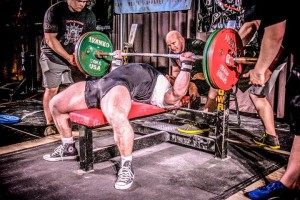
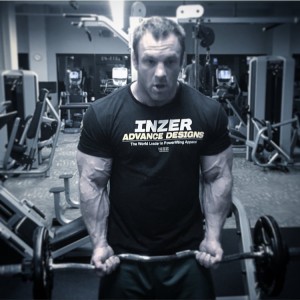
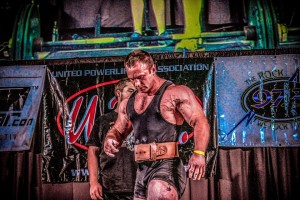
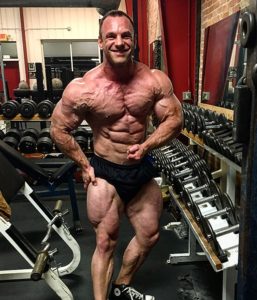
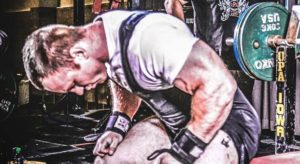

Sorry, the comment form is closed at this time.